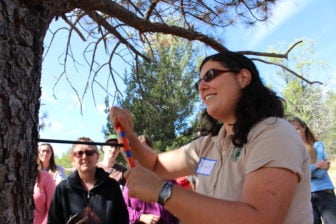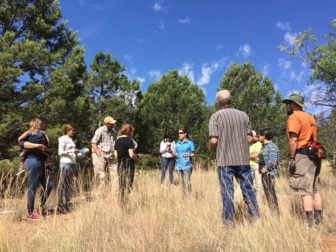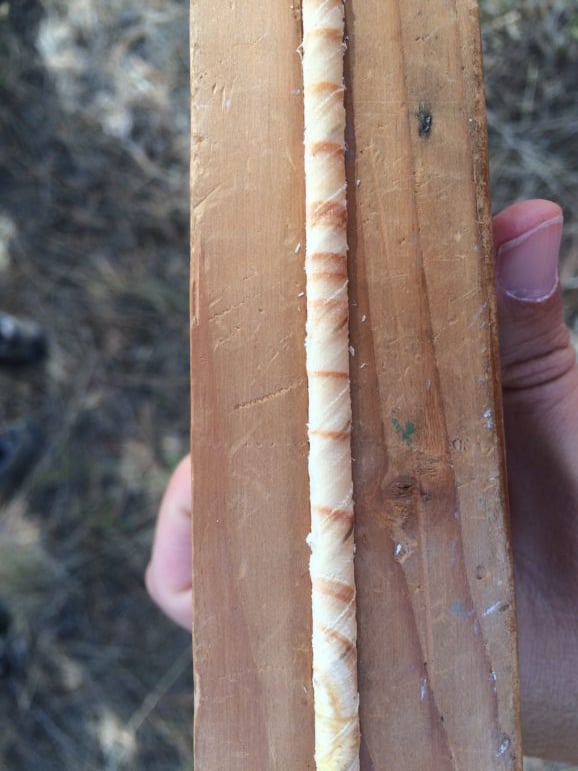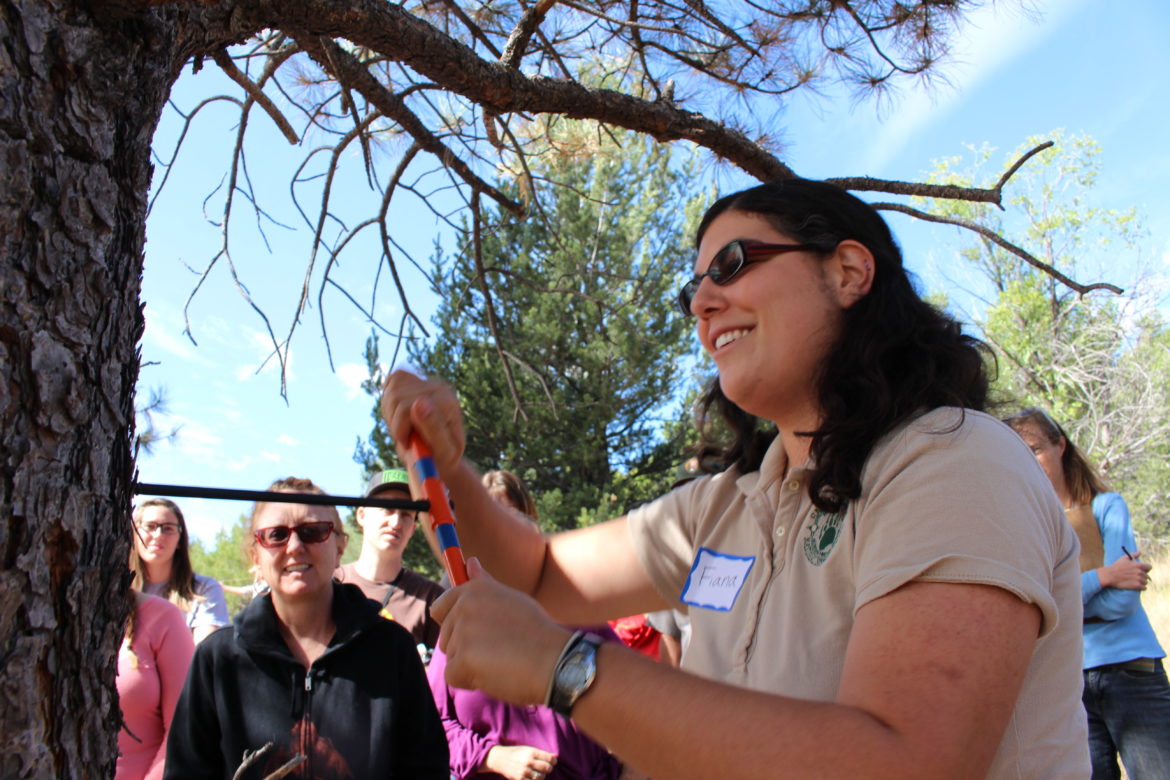
Laura Paskus/NMID
At the Sandia Mountain Natural History Center, Fiana Shapiro demonstrates how to produce an increment core from a ponderosa pine.
Last fall, about 30 middle school teachers headed out to the Sandia Mountain Natural History Center in Cedar Crest for a Saturday morning workshop on tree-ring science. Not every teacher has the time or expertise to bring climate science into the classroom, but workshops like this one can help inspire new lessons and innovative ideas.
“We want to help you efficiently bring climate science and tree-ring science to students,” Krista Bonafantine told the group. She’s a watershed ecologist with Arid Land Innovation. The Tree Rings for Teachers Workshop is sponsored by the Rio Grande Water Fund, a partnership of more than 40 nonprofits, businesses, and agencies focused on forest restoration and water security.
“New Mexico kids have limited place-based science education and this seemed like an engaging and timely topic,” says Bonafantine, who’s also worked as a wildland firefighter. “Tree rings provide a clear and concise lesson in the inextricable ties between trees and water in the Southwest.”
She adds that tree-ring science is a good way to ease people into learning more about climate change—and to reduce political discussions around the issue: “In mixed company I talk a lot about dead trees and drought because there is strong consensus around those subjects and they don’t irk as easily.”

Laura Paskus/NMID
Krista Bonafantine talks with a group of middle school teachers about tree-ring science last fall.
After classroom talks from local experts on issues like the difference between climate and weather, Bonafantine and the center’s Fiana Shapiro take the teachers outside, leading them up a small grassy hill dotted with juniper and pines. They split the teachers into groups and then demonstrate pulling what are called “increment cores” from the ponderosas.
Unlike a flat cross-section – where you can count the rings radiating out from the center – these are taken from live trees. Once cranked out with special borers, they look similar to straws, just more delicate and sort of damp.
Those cores are used to figure out how old a tree is and what sorts of climatic conditions it has weathered. “It’s not just counting rings: Trees will put on another ‘false ring’ with a good monsoon. There are also ‘missing rings,’ or, there might be a year with great rain, but there are insects,” Bonafantine says. “That’s why you need many samples to get a reliable estimate from a given area.”
Cores from one place are cross-dated with one another so that ring patterns can be matched to determine dates. The series of samples – usually two per tree and about 20 per site – are measured and dated, then averaged into a chronology for the area.

Laura Paskus/NMID
An increment core from a ponderosa pine.
Tree-ring reconstructions of the past can guide decision-makers today, says Bonafantine. For example, when states negotiated the Colorado River Compact in the early 20th century, people didn’t realize they were basing water allocations on river flows during an unusually wet period in the southwestern United States. In a 2006 paper based on tree-ring reconstructions, scientists showed that it was one of the wettest periods in five hundred years.
If students are learning now about these issues, they’ll be better poised to deal with challenges like forest die-offs, water scarcity, and public health impacts. And feeling connected to the landscapes around them is an important part of that.
“A sense of place is important to understanding the ecosystems that support us and also helping kids understand who they are and where they come from,” she says. “Our forests are collapsing around us and we need to figure out how to cope, adapt, and understand the transformation.”
On the web:
Additional information about tree-ring reconstructions for streamflow, including for particular river basins: http://treeflow.info/
2006 Colorado River Basin streamflow reconstruction study: http://www.u.arizona.edu/~conniew1/papers/WoodhouseLukasClCh.pdf
Summary of the Colorado River Basin streamflow reconstruction study: http://wwa.colorado.edu/climate/iwcs/archive/IWCS_2006_June_feature.pdf
